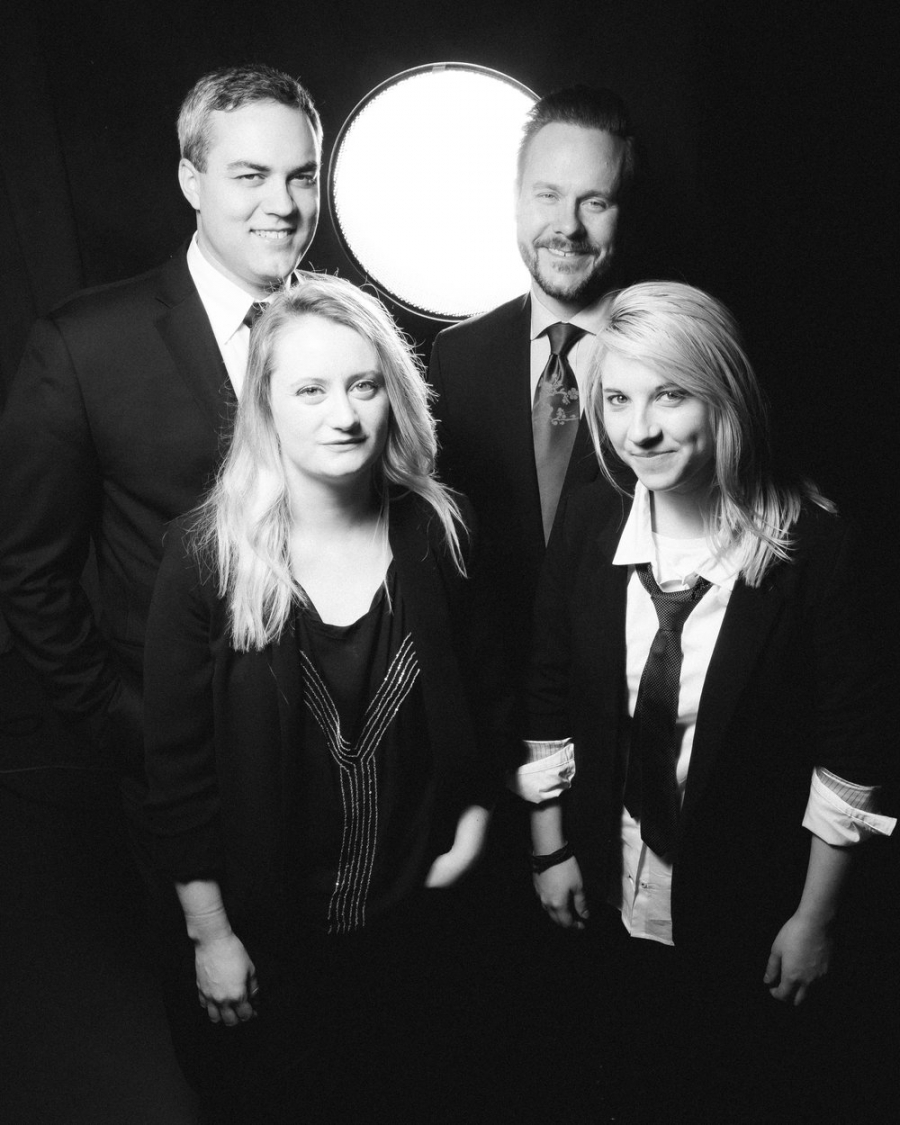A packed crowd greeted the Spektral Quartet on Sunday as the four musicians took their seats and Grand Rapids Art Museum staff members set up extra chairs for a handful of stragglers.
Violist Doyle Armbrust began by introducing his colleagues, including violinist Maeve Feinberg in her first public appearance with the group. Armbrust also took a moment to note that Spektral’s latest album, Serious Business, received a Grammy nomination last month. The album explores humor in classical music, from the traditional to the zany, and displays the Chicago-based foursome’s adventurous yet accessible character.
The one-hour program at the GRAM previewed excerpts from Spektral’s Finger on the Pulse program, which will later be performed at the University of Chicago and the Fermilab particle physics and accelerator laboratory. The star of the program is pizzicato, the musical technique in which string players pluck their instruments.
In the Quartet’s own words, pizzicato “highlights mood and rhythm, expands available colors in an artist’s palette, and is capable of bringing both dance-like lightness and explosive power to a composition.”
The group presented an energetic and playful interpretation of Beethoven’s String Quartet No. 10, Op. 74 to begin the concert. Nicknamed “The Harp” for its chipper use of pizzicato, the piece’s sunny disposition gives little indication that around the time it was written, Napoleon’s army was invading Vienna as Beethoven huddled with pillows clasped to his ears, trying to protect his hearing from the explosions.
The piece’s dramatic introduction was followed by two thunderous interruptions before violinist Clara Lyon’s lovely tone introduced the first musical idea — setting an elegant and optimistic mood for the rest of the piece. Beethoven was a master of tension, and Spektral executed this well as the players collectively gained momentum to merge the pizzicato and lyrical sounds together for a thrilling end to the first movement.
The second movement featured moments of intensity and brusqueness between mournful melodies. A heroic third movement mirrored the famous opening of Beethoven’s Fifth Symphony, with cellist Russell Rolen prompting a stormy series of licks across the group. The style of the fourth movement is a bit of an odd duck compared to the others, with its more rigid theme-and-variations format, but the Quartet kept the energy moving forward until the work’s conclusion.
The second half of the concert featured Ravel’s only string quartet, written when the French composer was 27. Spektral’s take was in turn sauve and spontaneous, but almost always colorful and brimming with dramatic texture. The second movement was a particular delight as Spektral emphasized the fandango-esque pizzicato passages against a whimsical theme.
Despite the cavernous appearance of the GRAM lobby, the venue provided a pleasant setting for a Sunday afternoon listening experience as the hour of music breezed by. If any aspect of the event was wanting, it was the addition of a contemporary piece to the program in order to fully showcase the group’s quirky personality. However, given many smiling faces and an enthusiastic standing ovation at the concert’s close, it was clear the audience was eager for a fourth appearance from Spektral sometime in the near future.
Read more about the Spektral Quartet with our preview of the Finger on the Pulse program here.





